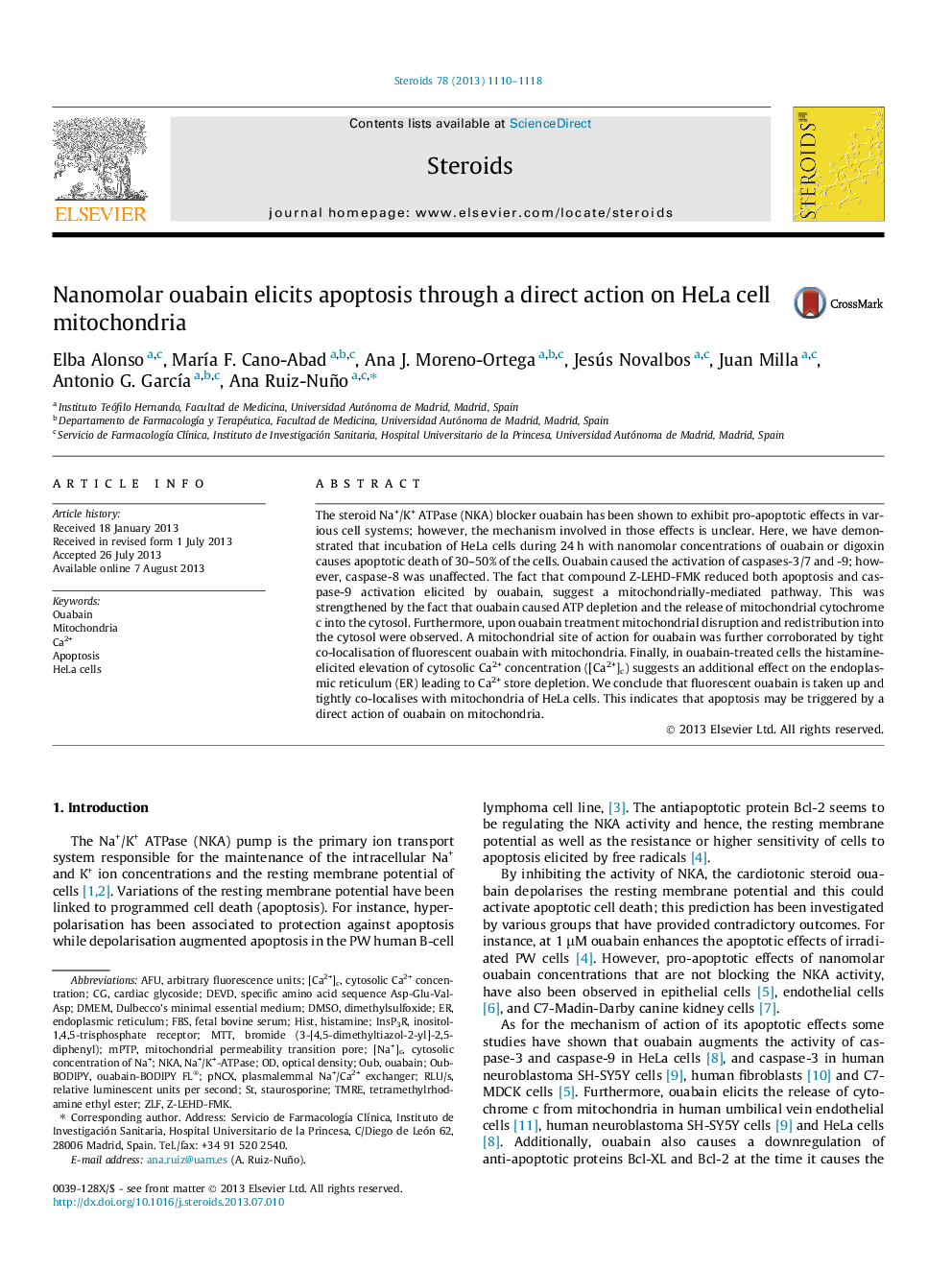| Article ID | Journal | Published Year | Pages | File Type |
|---|---|---|---|---|
| 2028180 | Steroids | 2013 | 9 Pages |
•A nanomolar concentration of ouabain causes apoptotic death of 30–50% of the cells.•Ouabain caused activation of caspases-3/7 and -9 and was reduced by Z-LEHD-FMK.•Ouabain provoked ATP depletion and release of mitochondrial cytochrome c.•Fluorescent ouabain was tight co-localised with mitochondria.•Ouabain elicits apoptosis acting at a mitochondrial site.
The steroid Na+/K+ ATPase (NKA) blocker ouabain has been shown to exhibit pro-apoptotic effects in various cell systems; however, the mechanism involved in those effects is unclear. Here, we have demonstrated that incubation of HeLa cells during 24 h with nanomolar concentrations of ouabain or digoxin causes apoptotic death of 30–50% of the cells. Ouabain caused the activation of caspases-3/7 and -9; however, caspase-8 was unaffected. The fact that compound Z-LEHD-FMK reduced both apoptosis and caspase-9 activation elicited by ouabain, suggest a mitochondrially-mediated pathway. This was strengthened by the fact that ouabain caused ATP depletion and the release of mitochondrial cytochrome c into the cytosol. Furthermore, upon ouabain treatment mitochondrial disruption and redistribution into the cytosol were observed. A mitochondrial site of action for ouabain was further corroborated by tight co-localisation of fluorescent ouabain with mitochondria. Finally, in ouabain-treated cells the histamine-elicited elevation of cytosolic Ca2+ concentration ([Ca2+]c) suggests an additional effect on the endoplasmic reticulum (ER) leading to Ca2+ store depletion. We conclude that fluorescent ouabain is taken up and tightly co-localises with mitochondria of HeLa cells. This indicates that apoptosis may be triggered by a direct action of ouabain on mitochondria.
Graphical abstractFigure optionsDownload full-size imageDownload as PowerPoint slide
